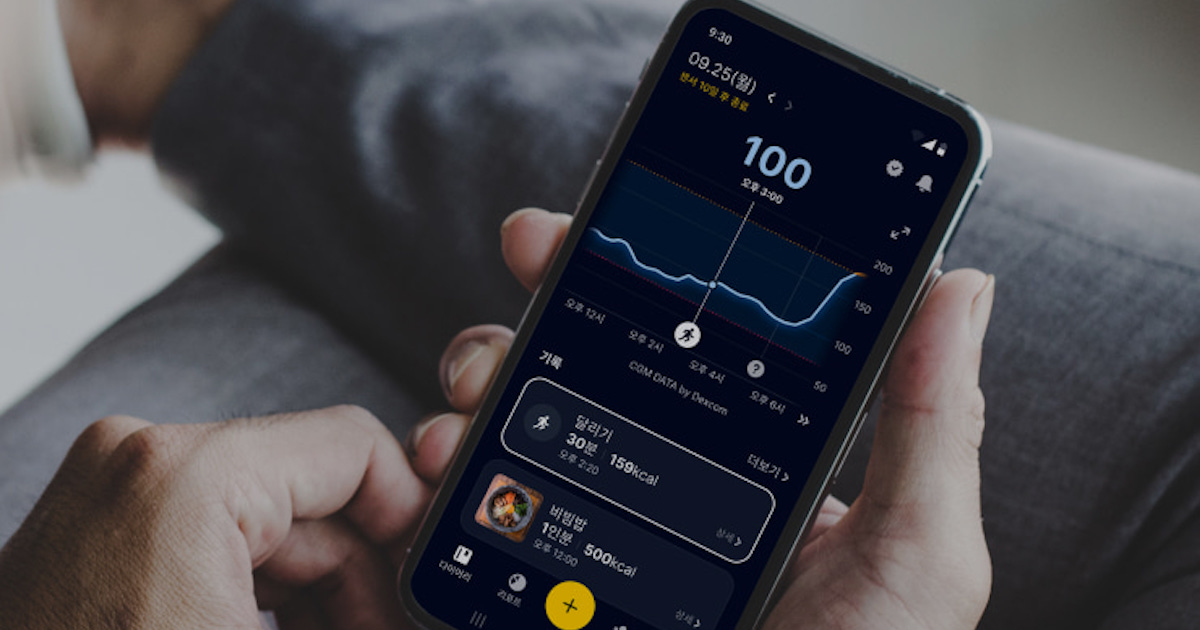Request Demo
Last update 08 May 2025

Yonsei University Health System
Last update 08 May 2025
Overview
Tags
Respiratory Diseases
Infectious Diseases
Monoclonal antibody
Disease domain score
A glimpse into the focused therapeutic areas
No Data
Technology Platform
Most used technologies in drug development
No Data
Targets
Most frequently developed targets
No Data
| Disease Domain | Count |
|---|---|
| Infectious Diseases | 1 |
| Top 5 Drug Type | Count |
|---|---|
| Monoclonal antibody | 1 |
| Top 5 Target | Count |
|---|---|
| hemagglutinin(Influenza virus hemagglutinin glycoproteins) | 1 |
Related
2
Drugs associated with Yonsei University Health SystemTarget |
Mechanism hemagglutinin modulators |
Active Org. |
Originator Org. |
Active Indication |
Inactive Indication- |
Drug Highest PhasePhase 2 |
First Approval Ctry. / Loc.- |
First Approval Date- |
Target |
Mechanism GPR39 agonists [+1] |
Active Org. |
Originator Org. |
Active Indication |
Inactive Indication |
Drug Highest PhasePhase 1/2 |
First Approval Ctry. / Loc.- |
First Approval Date- |
70
Clinical Trials associated with Yonsei University Health SystemKCT0009573
Randomized, double-blinded, crossover clinical trial comparing characteristics and satisfaction of single-implant prostheses fabricated with multi-layer zirconia block
Start Date10 Jun 2024 |
Sponsor / Collaborator |
KCT0009415
Evaluation of clinical efficacy of narrow diameter Dentium Bright Tissue-level impant system placed in the molar area: A randomized controlled clinical trial
Start Date16 May 2024 |
Sponsor / Collaborator |
KCT0009334
Comparison of Prognosis between Bone Level Implant and Tissue Level Implant: A Prospective RandomizedControlled Clinical Study
Start Date15 Apr 2024 |
Sponsor / Collaborator |
100 Clinical Results associated with Yonsei University Health System
Login to view more data
0 Patents (Medical) associated with Yonsei University Health System
Login to view more data
1,615
Literatures (Medical) associated with Yonsei University Health System01 Jun 2025·European Journal of Surgical Oncology
Diagnostic performance of fluorescent lymphography-guided lymph node dissection during minimally invasive gastrectomy following chemotherapy
Article
Author: Cho, Minah ; Yoon, Ja Kyung ; Kim, Hyoung-Il ; Hwang, Jawon ; Park, Sung Hyun ; Hyung, Woo Jin ; Kim, Yoo Min ; Kim, Hyunki ; Jeong, Ji Yoon
21 Apr 2025·Cancer Research
Abstract 4607: Pharmacokinetic analysis of palbociclib and association with safety/efficacy in patients with HR-positive/HER2-negative advanced breast cancer: Result from PATHWAY trial
Author: Kuchiba, Aya ; Yamamoto, Naohito ; Iwasa, Tsutomu ; Kojima, Yuki ; Jung, Kyung Hae ; Sudo, Kazuki ; Yagishita, shigehiro ; Sohn, Joo Hyuk ; Hata, Tomomi ; Noguchi, Emi ; Lee, Soo Chin ; Sim, Sung Hoon ; Nakamura, Kenichi ; Mori, Yuko ; Mukai, Hirohumi ; Aogi, Kenjirou ; Umeyama, Yoshiko ; Yamanaka, Takashi ; Lu, Yen-Shen ; Tseng, Ling-Ming ; Matsumoto, Koji ; Chung, Chi-Feng ; Lee, Kyung Hun ; Tamura, Kenji ; Shibata, Taro ; Tokunaga, Eriko ; Tanabe, Yuko ; Watanabe, Kenichi ; Yasojima, Hiroyuki ; Hamada, Akinobu ; Fujiwara, Yasuhiro ; Yonemori, Kan ; Iwata, Hiroji ; Kang, Seok Yun ; Yap, Yoon Sim
21 Apr 2025·Cancer Research
Abstract 5222: Establishment of a patient-derived organoid-PBMC co-culture model to investigate immune responses and immunotherapy sensitivity in advanced gastric cancer
Author: Kim, Tae Soo ; Mun, Han Byeol ; Kwon, Woo Sun ; Rha, Sun Young
10
News (Medical) associated with Yonsei University Health System22 Apr 2025
A new study from South Korea has demonstrated the use of AI models to possibly diagnose and stratify attention deficit hyperactivity disorder by analysing eye images.
FINDINGS
Researchers from Yonsei University Health System have used four machine learning models and the AutoMorph deep learning pipeline to analyse approximately 1,108 retinal fundus photographs from over 600 children with ADHD and children with typical development.
Based on findings published in npj Digital Medicine, all four models showed high accuracy, reaching up to 96.9%. These AI models also showed high performance of up to 87.3% in predicting the degree of impairment in visual selective attention, an ability that ADHD patients are usually challenged with.
The study also identified representative symptoms of ADHD by deriving key retinal features via a Shapley Additive Explanations analysis. These include increased vascular density, decreased arterial vessel width, and changes in the optic disc structure.
WHY IT MATTERS
ADHD is a neurodevelopmental disorder that is difficult to diagnose quickly, says the Yonsei University researchers. Challenges in diagnosis include patients' high subjectivity, the variability of symptoms among individuals, and overlapping symptoms with other existing conditions.
Considering the established role of dopamine in retinal function and ADHD symptoms, the researchers looked at retinal images as a potential ADHD screening biomarker in their study.
Eventually, they proved the potential of retinal images as an ADHD biomarker and rapid screening tool.
"Fundus examinations are very simple, taking less than five minutes. It seems these can be used as a rapid test to monitor the effectiveness of ADHD treatments," said Keun-ah Cheon, professor of Paediatrics at Severance Hospital and co-research lead.
THE LARGER TREND
Most digital innovations that came out over the past years have only complemented ADHD management, like a mobile application developed at Flinders University in Australia and a digital therapeutics-based program by Singapore's Institute of Mental Health and local startup Neeuro.
Meanwhile, eye and eye image-based screening technologies, augmented by AI, have also been applied to diagnose or predict other neurodevelopmental conditions, particularly autism spectrum disorder. Recently, a researcher from Waseda University in Japan demonstrated the use of eye-tracking technology to test children's responses to predictable movement stimuli, which was found to have potential as a behavioural marker for early autism diagnosis.
27 Sep 2024
Qure.ai nets $65M for foundational AI
Qure.ai has raised $65 million in a Series D funding round led by Lightspeed and 360 ONE Asset.
The company said it will use its fresh funds to invest more in foundational AI models, as well as acquire complementary startups in medical technology. It will also be used to accelerate its expansion in the United States and other markets.
Early this year, the Mumbai-based company obtained two major clearances from the United States Food and Drug Administration: a breakthrough device designation for its tuberculosis screening AI solution, qSpot-TB, and a 510(k) clearance for the lung nodule on the qXR AI-powered chest X-ray software.
Mediwhale bags $12M to seek US FDA approval
South Korean health diagnostics firm Mediwhale has scored $12 million in a Series A2 funding round led by the Korea Development Bank.
The company claims to offer the world's first retina-based solution – called Reti-CVD – that uses AI to assess cardiovascular disease risk.
It plans to use its new funds to pursue a US FDA approval for Reti-CVD. The software was reportedly rolled out across the Yonsei University Health System early this year.
"We are determined to secure FDA De Novo approval by 2025, with plans to launch our product in the United States shortly thereafter," CEO Kevin Choi said in a statement.
Besides securing a regulatory clearance, Mediwhale also seeks to improve its AI further and develop new solutions to predict chronic kidney disease risk.
Mediwhale last raised $2 million in a pre-Series A funding round in 2021 and $9 million in a Series A round in 2023.
Huawei launches medical imaging AI
Huawei recently unveiled a new AI-powered solution for analysing medical images.
Called "Medical Technology Digitalization 2.0," the technology enables smart segmentation, detection, and quantitative analysis of medical images using AI with up to 98% accuracy. Huawei claims the solution can shorten disease diagnosis time by 40%, although it has not specified which disease.
Additionally, the AI solution can also be applied to ultrasound devices running on the OpenHarmony operating system.
The Chinese tech giant worked with several local medical technology companies, including MED Imaging AI, Wanxiang, Beijing DeepWise, and KFBIO, to develop the solution, which has been implemented in such major projects as the Fourth People's Hospital in Shenyang, capital of China’s northeast Liaoning Province.
Korean pharma turns to AI for new drug discovery
Korean pharmaceutical company GI Innovation is pursuing the application of AI for new drug development.
It recently signed a memorandum of understanding with local company i-Divine to develop its core cancer drug pipelines and utilise the latter's AI solution to discover new cancer therapy targets.
i-Divine's AI is based on a large language model trained on over a billion patents, papers, and real-time biological data sourced globally. It was previously utilised to analyse the success potential of 16,000 new drug substances, including one of GI Innovation's anti-cancer drug pipelines.
MediBuddy adopts Philips' predictive heart AI
MediBuddy in India is integrating Philips' heart health monitoring platform into its mobile health application.
The AI-based longitudinal triaging solution called HeartPrint tracks and assesses key biomarkers from a person's finger when scanned through their smartphone's camera. These include cardiovascular age, diabetes risk, OSA risk, cardio-respiratory fitness index, heart rate analysis, cardiac index, blood pressure variability, and stress disorder prediction.
The AI solution also analyses patterns indicating a person's risk of developing heart disease, overall health deterioration, heart resilience, and short and long-term changes in cardiac function.
02 Feb 2024
Kakao Healthcare has unveiled its latest AI-driven mobile diabetes management app.
Called PASTA (Personalised, Accessible, Supportive, Tech-enabled, and Affordable), the app currently links to two CGM devices: CareSens Air by local manufacturer i-SENS and Dexcom's G7. The app will also pair with the Mallya smart cap for insulin pens by the second quarter.
Once the CGM device is linked, the app automatically displays details about the user's blood sugar in real-time via Bluetooth. It also allows users to record their meals, exercise, insulin doses, and medication. The app features vision AI that automatically provides information about nutrition, calories, and food types of their meals.
Another feature is a handy summary report of the user's blood sugar reading with indicators pointing out which ones are good and bad. These summaries are also made available for sharing with the user's family. It can also provide a guide to managing blood sugar levels and creating healthy lifestyle habits.
Now available on both Android and iOS devices, the PASTA app was named as such, likening the many ways to manage diabetes to the variety of pasta.
Meanwhile, Kakao Healthcare developed Pasta Connect Pro, a dashboard for doctors where they can check their patients' blood sugar trends and lifestyle changes in near real time. It is planned to be linked with hospital EMRs to provide convenience of data input to staff and patients.
In a statement, Kakao Healthcare disclosed its plans to expand its latest digital diabetes management app and service internationally, starting in Japan this year.
Seegene, a provider of PCR-based (polymerase chain reaction) diagnostic solutions from South Korea, has onboarded Microsoft as a tech partner to its SG OneSystem, which collaborates with scientists and experts globally to develop syndromic quantitative PCR diagnostic tests.
A host of Microsoft services will be incorporated into Seegene's Digitalised Development System (SGDSS) which powers the SG OneSystem.
For one, it will integrate Microsoft Azure services, including the Azure OpenAI Service, to support data interaction and analysis for researchers dealing with big data. The AI-driven analytics platform Microsoft Fabric will be deployed to amalgamate Seegene's data and introduce such capabilities as data integration, data engineering, data science, data monitoring, real-time analytics, and business intelligence. Microsoft 365 Copilot will also integrate AI-driven assistance to "accelerate productivity, foster innovation and enhance creativity," according to a press release.
Additionally, Seegene said it will work with Microsoft on next-generation management and analytics for PCR data and explore future ventures within healthcare.
Singaporean medtech Aevice Health and its London-based partner Jiva.ai will be collaborating to develop an AI that can predict asthma exacerbations.
Funded by Innovate UK and Enterprise Singapore, the collaborative project aims to harness health data collected through the AeviceMD wearable stethoscope to create an AI-driven early warning system for asthmatic patients.
Yonsei University Health System has rolled out across its clinical practices an AI diagnostic solution for assessing risks of cardiovascular disease (CVD).
Developed by South Korean startup Mediwhale, Reti-CVD uses retina scans to detect CVD risks.
Researchers from South Korea have developed an AI model that can potentially predict the likelihood of sepsis.
In a study, whose findings were published in the Light: Science & Applications journal by Nature Portfolio, they ran 3D images of the CD8 T cells, a potential biomarker of sepsis, into their AI model and were compared against images of healthy cells in a controlled group.
The AI was later found to predict the likelihood of sepsis from analysing CD8 T cell images with up to 99% accuracy.
The research team was comprised of academics and doctors from Yonsei University College of Medicine, Severance Hospital, and biotech company Tomocube.

100 Deals associated with Yonsei University Health System
Login to view more data
100 Translational Medicine associated with Yonsei University Health System
Login to view more data
Corporation Tree
Boost your research with our corporation tree data.
login
or

Pipeline
Pipeline Snapshot as of 16 Nov 2025
The statistics for drugs in the Pipeline is the current organization and its subsidiaries are counted as organizations,Early Phase 1 is incorporated into Phase 1, Phase 1/2 is incorporated into phase 2, and phase 2/3 is incorporated into phase 3
Phase 2 Clinical
1
1
Other
Login to view more data
Current Projects
| Drug(Targets) | Indications | Global Highest Phase |
|---|---|---|
Navivumab ( hemagglutinin ) | Influenza A virus infection More | Phase 2 |
GSK-2636771 ( GPR39 x PI3Kβ ) | Stomach Cancer More | Pending |
Login to view more data
Deal
Boost your decision using our deal data.
login
or

Translational Medicine
Boost your research with our translational medicine data.
login
or

Profit
Explore the financial positions of over 360K organizations with Synapse.
login
or

Grant & Funding(NIH)
Access more than 2 million grant and funding information to elevate your research journey.
login
or

Investment
Gain insights on the latest company investments from start-ups to established corporations.
login
or

Financing
Unearth financing trends to validate and advance investment opportunities.
login
or

AI Agents Built for Biopharma Breakthroughs
Accelerate discovery. Empower decisions. Transform outcomes.
Get started for free today!
Accelerate Strategic R&D decision making with Synapse, PatSnap’s AI-powered Connected Innovation Intelligence Platform Built for Life Sciences Professionals.
Start your data trial now!
Synapse data is also accessible to external entities via APIs or data packages. Empower better decisions with the latest in pharmaceutical intelligence.
Bio
Bio Sequences Search & Analysis
Sign up for free
Chemical
Chemical Structures Search & Analysis
Sign up for free


